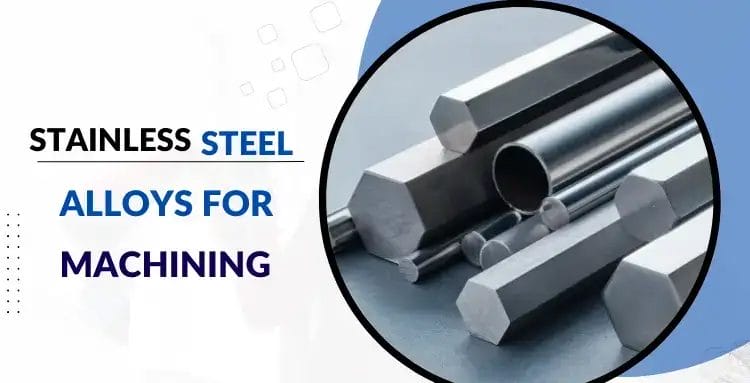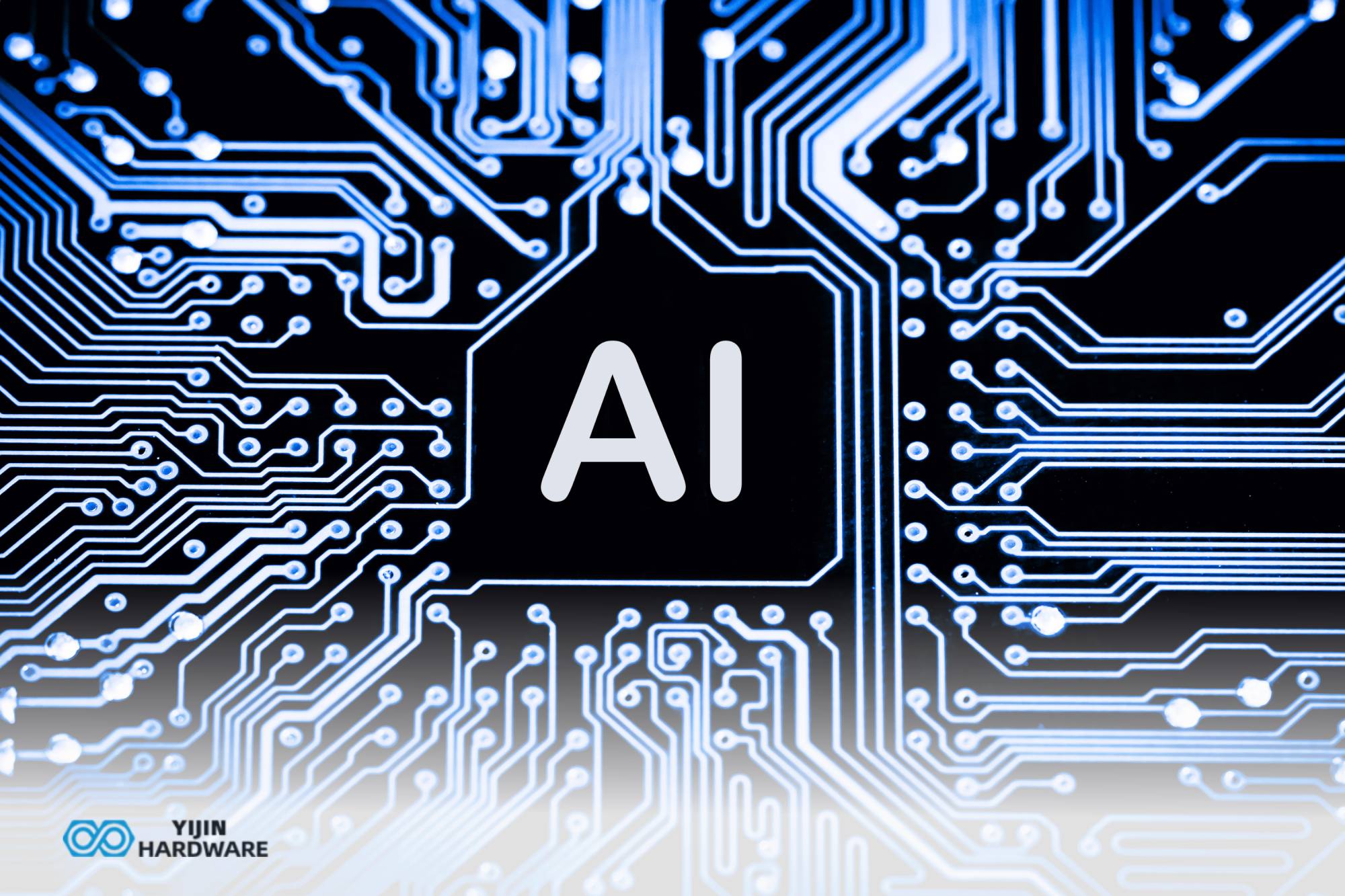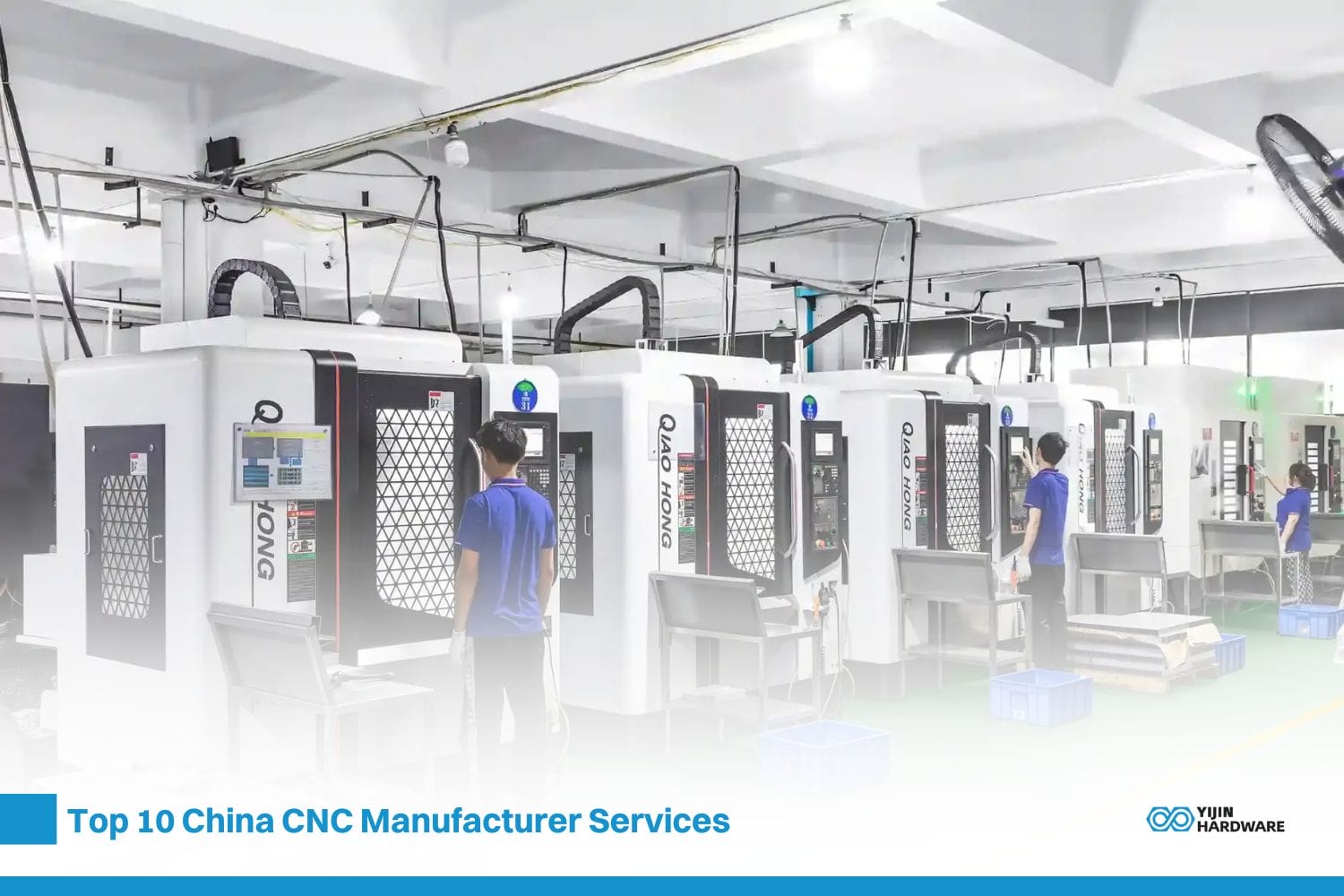There is plenty of information available on CNC machining, but few go in-depth about specific materials like stainless steel. This guide dives deeper into the machinability of stainless steel, covering its unique challenges, techniques for improving machinability, and insights into the material properties that influence CNC machining.
Why Stainless Steel is Challenging to Machine
Stainless steel is a popular material for CNC machining, but its toughness, corrosion resistance, and high tensile strength make it challenging to work with compared to other metals like aluminum. When machining stainless steel, it’s crucial to understand how its alloying elements and material properties affect machinability.
Common Challenges in Machining Stainless Steel:
- Work Hardening: Stainless steel tends to harden during machining, making it more difficult to cut as the process continues.
- Low Thermal Conductivity: Stainless steel doesn’t dissipate heat efficiently, causing heat to build up at the cutting tool, leading to tool wear and deformation.
- Built-up Edge (BUE): Material can adhere to the cutting edge, affecting precision and finish quality.
To overcome these challenges, machinists must carefully select tools, adjust cutting parameters, and use the proper coolants and coatings.
Also Read:
Properties of Stainless Steel That Impact Machinability
The machinability of stainless steel depends on its alloy composition. Below is a breakdown of how different elements contribute to machinability:
| Element | Effect on Machinability | Typical Alloy Ranges (%) |
|---|---|---|
| Chromium (Cr) | Provides corrosion resistance by forming a passive oxide layer | Min 10.5% |
| Nickel (Ni) | Increases toughness and corrosion resistance, but can reduce machinability | Up to 25% |
| Sulfur (S) | Added in low amounts to improve machinability by forming chip-breaking sulfides | Low amounts |
| Carbon (C) | Increases hardness, improving strength but decreasing machinability | Varies, typically <1.2% |
| Molybdenum (Mo) | Improves pitting corrosion resistance, but may make machining harder | 0.5 – 7.0% |
| Titanium (Ti) | Enhances toughness in ferritic steels, may complicate machining | Varies |
| Niobium (Nb) | Increases hardness and machinability in martensitic alloys | Varies |
| Nitrogen (N) | Improves strength and pitting resistance, especially in austenitic stainless steels | Varies |
These elements influence important machining factors such as chip formation, cutting forces, and tool wear. For example, sulfur improves machinability by forming inclusions that break chips and act as lubricants during cutting.

Machinability of Common Stainless Steel Grades
Stainless steel comes in various grades, each offering different machinability. Here’s a quick comparison of popular stainless steel grades used in CNC machining:
| Stainless Steel Grade | Main Properties | Applications | Machinability |
|---|---|---|---|
| 304 (General Purpose) | Good corrosion resistance, excellent formability | Shafts, fasteners, kitchen equipment | Moderate (improves with sulfur addition) |
| 316 (Marine Grade) | Superior corrosion resistance (molybdenum), resistant to pitting | Marine parts, chemical equipment | More difficult than 304 |
| 430 (Ferritic) | Lower cost, decent corrosion resistance, magnetic | Appliances, automotive trim | Easier than 304/316 |
| 17-4 PH (Martensitic) | High strength, hardenable, used in aerospace | Medical implants, valves, aerospace parts | Difficult, requires precise tools and techniques |
Key Considerations for Stainless Steel Machinability
- 304 stainless steel is more machinable compared to 316 due to its lower nickel content, which reduces work hardening.
- 316 offers superior corrosion resistance, particularly in chloride environments, but it can be tougher to machine due to its molybdenum content.
- 400-series stainless steels, such as 430, are generally easier to machine because they are less prone to work hardening and have higher sulfur content in certain grades (e.g., 430F).
Alao Read:
Machining in Different Types of Stainless Steel
Machinability varies significantly in different types of stainless steel depending on the elements added. A condition called built-up edge is when the material adheres to the cutting edge. It is usually caused by low cutting speed and hard work on the material at the point of cutting.
Increasing the shear or rake angle and the RPM will aid in heat creation. However, each type of stainless steel has many other dynamics.
Thermal Conductivity in CNC Machining Stainless Steel
Thermal conductivity is the material’s capacity to transfer or conduct heat. It is one of the major factorFs in machining stainless steel. The reason is its meager ability to create the heat necessary to form and break a proper chip.
So, in machining a workpiece with poor conductivity, an increased amount of heat transfers into the tool. It highlights the importance of appropriate coolant flush to carry away heat chips and tool coatings. It acts as a heat barrier between the tool substrate and the material being cut.
Elements Added in Stainless Steel Base Material
Moving now into the elements added to each base material to form the various types, the table below lists all of these alloying elements. These are added in different amounts and at different stages of the material development.
Each one gives the material the desired qualities. As more and more of the elements are added, tool parameters decrease, and tool life can be compromised.
Of course, first up is chromium. As we mentioned a material must include a minimum of 10.5% chromium to be classified as stainless. When chromium is added, the material can create a passive film called chromium oxide. This stops the form of rust and creates an immediate barrier when exposed to oxygen. This is the base of all stainless steel.
Carbon is added in low amounts to certain types of stainless to increase the hardness and strength ability. Low-carbon types like 304L are often used in welding situations.
Practical Tips for Machining Stainless Steel
Given the challenges of machining stainless steel, here are expert tips to improve machinability:
1. Optimize Cutting Speeds and Feeds
- Low to moderate speeds: Stainless steel has a tendency to work-harden, especially at low cutting speeds. For improved results, keep the RPM high, but within the range that allows proper chip formation and minimizes heat buildup.
- Higher feed rates: Increasing feed rates can help prevent work hardening at the cutting edge.
2. Use Carbide Cutting Tools
- Carbide tools: High-speed steel tools tend to wear out quickly when machining stainless steel. Use carbide tools with coatings such as TiAlN (Titanium Aluminum Nitride) to withstand the high temperatures and cutting forces.
- Tool geometry: Opt for tools with positive rake angles to reduce cutting forces and improve chip evacuation. Ensure sharp cutting edges to minimize the risk of built-up edge.
3. Apply Coolants Liberally
- Flood coolant: Stainless steel machining generates significant heat, which can damage tools and deform workpieces. Use a flood of coolant to carry away heat and improve tool life.
- Oil-based coolants: These tend to perform better than water-based coolants in reducing friction and prolonging tool life, especially for deep cuts.
4. Prevent Built-Up Edge (BUE)
- Increase shear angle: A higher shear angle can reduce built-up edge, leading to cleaner cuts and a better surface finish.
- Use coated tools: Coatings such as TiAlN or CrN (Chromium Nitride) help to prevent material from sticking to the cutting edge.
5. Select Proper Tool Coatings
- Tool coatings: Stainless steel tends to adhere to tools, especially when machining grades like 316. Coatings such as TiCN (Titanium Carbo-Nitride) or TiN (Titanium Nitride) can reduce friction, protect against tool wear, and improve surface finish.
Stainless Steel Machining Processes
Stainless steel can be machined through a variety of processes. Below are some common machining processes along with the stainless steel alloys they are best suited for:
| Process | Alloy Example | Common Product |
|---|---|---|
| Turning | 304, 316 | Shafts, pins, bushings |
| Milling | 316, 17-4 PH | Impellers, pump housings |
| Drilling | 430, 304 | Hinges, brackets |
| Tapping | 17-4 PH, 304 | Aerospace components, fasteners |
Turning
Turning is used to create cylindrical parts like shafts and bushings. The workpiece rotates while a cutting tool removes material. For stainless steel, use sharp inserts with high rake angles to reduce cutting forces.
Milling
Milling is excellent for creating complex parts like pump housings or slots. Use low cutting depths and frequent tool changes to avoid overheating the workpiece.
Drilling
When drilling into stainless steel, use sharp, cobalt or carbide drill bits and ensure sufficient coolant is applied to avoid work hardening at the cutting point.
Tapping
Tapping stainless steel can be tricky due to its toughness. Use high-speed taps with coatings to improve durability and reduce friction during thread cutting.
Surface Finishing Options for Stainless Steel Parts
Surface finishing is a critical aspect of CNC machining. The finishing technique depends on the part’s application, whether it’s for aesthetic purposes or for enhanced durability and resistance. Here are a few popular finishing techniques for stainless steel:
- Buffing: Creates a smooth, brushed look by using fine abrasives.
- Polishing: Achieves a mirror-like shine, ideal for decorative or high-visibility parts.
- Bead Blasting: Adds a matte finish by blasting the surface with tiny beads, providing a textured, anti-glare finish that also helps to hide minor imperfections.
Advanced Techniques for Stainless Steel Machining
For complex projects and high-precision parts, advanced machining techniques and strategies can make all the difference. Below are methods and processes that help improve the machinability of stainless steel, particularly for tougher alloys like 316 or 17-4 PH.
1. Use of Modern Toolpath Strategies
- High-Efficiency Milling (HEM): By using higher speeds and lower radial engagement, HEM helps dissipate heat over a larger area of the tool and reduces the risk of work hardening. This strategy also improves tool life and surface finish.
- Trochoidal Milling: Trochoidal paths minimize the amount of heat generated by keeping the cutting tool engaged with the material for a shorter period per pass, making it ideal for hard-to-machine stainless steels like 17-4 PH.
2. Employing Multi-Axis CNC Machines
- 4-axis and 5-axis CNC machines: These machines allow more complex tool paths and the ability to machine intricate geometries in a single setup. For stainless steel, this helps reduce potential errors and minimizes the risk of part distortion, especially for thin-walled or complex parts.
3. Vibration-Damping Tool Holders
- Anti-vibration tool holders: Stainless steel’s toughness can induce excessive vibrations during machining, leading to poor surface finishes and tool wear. Using vibration-damping tool holders improves stability and results in higher precision and surface quality.
4. Application of Advanced Coolant Techniques
- Minimum Quantity Lubrication (MQL): Instead of flooding the workpiece with coolant, MQL uses a small amount of high-performance lubricant applied directly to the cutting zone. This reduces heat and improves surface finishes in materials prone to work hardening.
- Cryogenic Machining: By applying liquid nitrogen directly to the cutting zone, cryogenic machining significantly reduces heat build-up, leading to increased tool life and better surface finishes, especially in tough-to-machine stainless steels like 316.
5. Tool Life Monitoring Systems
- Real-time tool wear monitoring: Installing sensors in modern CNC machines helps track tool wear and ensures that tools are changed before they fail, improving the overall efficiency and accuracy of the machining process. This is especially important for stainless steels due to their tendency to wear out tools quickly.
Surface Treatment Options for Stainless Steel Machined Parts
To enhance the performance, appearance, or durability of stainless steel parts, several surface treatments can be applied after machining:
- Passivation: This chemical process removes free iron and other contaminants from the surface of stainless steel, enhancing its corrosion resistance. It’s essential for parts used in environments where rust prevention is critical, such as marine or medical applications.
- Electropolishing: Electropolishing smooths and polishes the surface at the microscopic level, making it ideal for parts that require a mirror-like finish or are exposed to harsh environments. It also enhances corrosion resistance.
- Heat Treatments: Certain stainless steel grades, like 17-4 PH, can be heat-treated to improve their hardness and mechanical properties. Heat treatment is useful when parts must withstand high stress or extreme conditions.
Case Studies: Successful Stainless Steel Machining Projects
To illustrate how these machining techniques can be applied in real-world scenarios, here are a few examples of successful stainless steel machining projects by Yijin Hardware:
- Aerospace Components (17-4 PH): For an aerospace client, we machined high-strength, corrosion-resistant parts using 5-axis CNC machines and cryogenic cooling to achieve tight tolerances and reduce tool wear.
- Marine Equipment (316 Stainless Steel): We manufactured impellers and valve bodies for a marine equipment provider. By utilizing high-efficiency milling strategies and anti-vibration tool holders, we maintained the structural integrity of the parts while reducing machining time.
- Medical Implants (304 Stainless Steel): We produced custom medical implants with a high-polish surface finish using electropolishing techniques, ensuring they were biocompatible and easy to sterilize.
Common Mistakes in Machining Stainless Steel (And How to Avoid Them)
Machining stainless steel requires precision and expertise. Here are common mistakes machinists encounter and how to avoid them:
- Incorrect Tool Selection: Using tools that are not suited for stainless steel can lead to excessive wear, poor surface finishes, and inaccurate cuts. Always use carbide tools with high wear resistance and appropriate coatings like TiAlN.
- Improper Cutting Speeds: Running the machine at inappropriate speeds can cause work hardening and premature tool wear. For best results, use lower cutting speeds and higher feed rates to prevent built-up edge formation.
- Inadequate Coolant: Skimping on coolant application can cause overheating and affect the accuracy of the cut. Always use a sufficient amount of coolant, preferably oil-based for stainless steel machining.
- Ignoring Material-Specific Strategies: Stainless steel grades differ significantly in their machinability. Understanding the specific challenges of each grade—such as 316’s low machinability due to molybdenum—can help in adjusting machining strategies.
Also Read:
Aluminum CNC Machining
Titanium CNC Machining
FAQs: Stainless Steel Machinability
1. What are the most common methods of stainless steel machining?
- The most common CNC machining methods for stainless steel are turning, milling, drilling, and tapping. Advanced methods like laser-cutting and waterjet cutting are also used for specific applications.
2. What is the machinability of stainless steel?
- Stainless steel is generally tougher to machine than softer metals due to its work-hardening characteristics and low thermal conductivity. Grades with higher sulfur content, such as 303 and 430F, offer better machinability, while 316 and 17-4 PH are more challenging.
3. Is 304 or 316 easier to machine?
- 304 stainless steel is easier to machine than 316 because it has a lower nickel and molybdenum content, making it less prone to work hardening.
4. Can I machine stainless steel at home?
- Machining stainless steel at home can be difficult due to the need for high-end equipment and expertise. It requires professional CNC machines with multi-axis capabilities to achieve precision. For DIY projects, simpler metals like aluminum or brass are easier to machine.
Trust Yijin Hardware for Stainless Steel Machining
CNC machining stainless steel is challenging but rewarding, especially when done right. By understanding the properties of each stainless steel grade and using the right tools, techniques, and coolants, machinists can create high-precision parts that meet exact specifications.
At Yijin Hardware, we specialize in machining complex stainless steel parts with a focus on quality, precision, and rapid turnaround. Our team of experienced machinists and state-of-the-art CNC machines can handle any stainless steel machining project, no matter how intricate or demanding. Whether you’re looking for custom parts for the aerospace, marine, medical, or automotive industries, we have the expertise and equipment to deliver.
Get Your Custom Stainless Steel Parts Today!
Ready to start your next stainless steel machining project? Yijin Hardware is your trusted partner for high-quality, on-demand CNC machining services. With our advanced techniques and commitment to excellence, we guarantee precision and durability in every part we manufacture.
Contact us today to request a free quote!
Let us help you turn your complex designs into reality with our cutting-edge machining technology.
Back to Top: Stainless Steel Machinability

 info@yijinsolution.com
info@yijinsolution.com (+86) 188-2253-7569
(+86) 188-2253-7569







